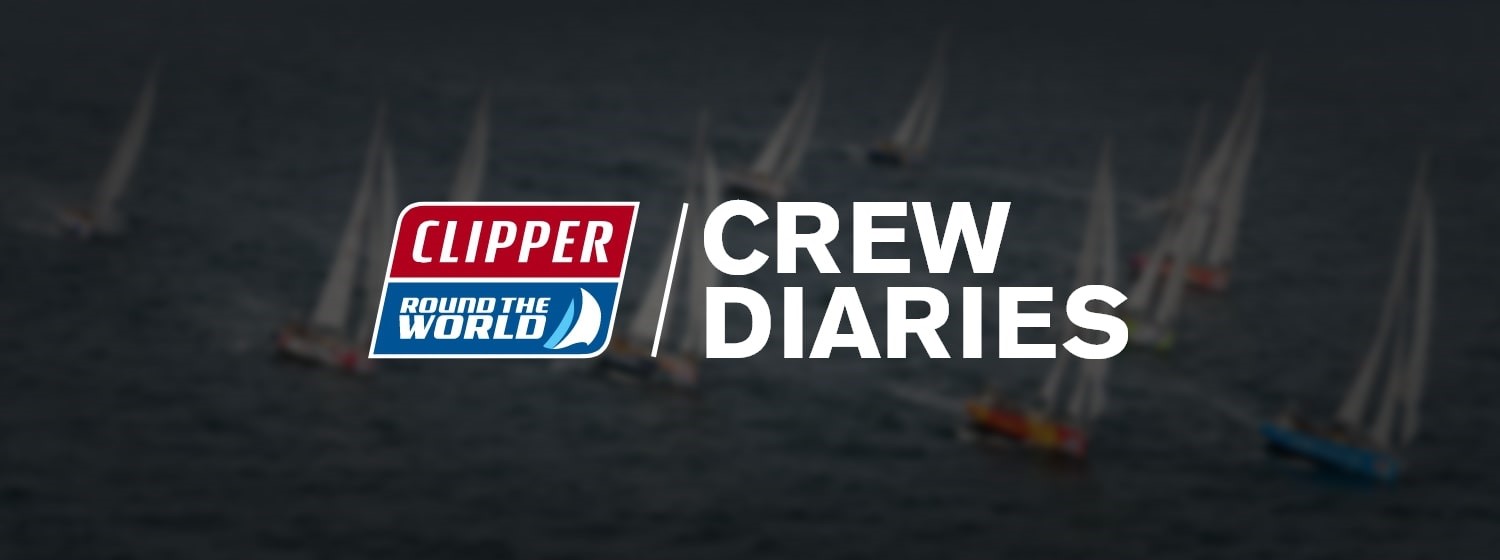As we make our way around Tasmania on Race 5: Sta-Lok Endurance Test, we are just over halfway through Leg 4 on the race to Newcastle. I see this as a great time to share with you my experience on helming as a new ocean racer. I do this with the intent to temp any curious minds into stepping up and embracing being at the helm.
On PSP Logistics our Skipper Mike and AQP Lottie are very much of the mindset that helming in this race is a crew pursuit. Yes, they can helm, both to a high standard, and could helm for us, but is that the purpose of those who have signed up to partake in the Clipper Round the World Yacht Race? As Skipper Mike rightly says, “Have you signed up to empty bilges or make the boat go fast?”
To start, I asked the PSP Logistics crew on board; “If you could use one word to describe helming across an ocean on a Clipper 70ft yacht, what’s the first word that springs to mind?” Here are the some of the answers I got:
- Anxiety driven
- Intimidating
- Exhilarating
- Soothing
- Peaceful
Amazingly, the above words crop up again and again. The words seem to represent stages one goes through depending on prior experience, sea state, wind conditions, up wind or down wind, day or night sailing and which sails are up. I see that the Clipper Race is the perfect opportunity to build yourself up to battle all those possible barriers to feeling freedom while helming. As AQP Lottie says; “You are here for a reason. The conditions may put you off sometimes but how will you know you cannot helm unless you try?”
There are five key factors which certainly eliminated those barriers for me over the years and having spoken to others who seem to have gotten to that point too:
- Practice: it is a simple one, but the more you’re on the helm, the less intimidating it will be. With ocean racing, each day can bring a different level of helming needs, and things may go wrong – that’s ok, and critical to grow. I would recommend mentioning to your skipper that you want to helm on each watch, and in various conditions. Remember, this is your race, of your life.
- A good helm check: this is the person who will stand behind the helmsman giving them direction and inform them of anything they may have missed. In order to feel confident with practising, having a knowledgeable person calmly supporting you is critical. I have been lucky enough to work with Andrew on my watch, a highly skilled helmsman and RTWer as my helm check on this race. Every communication is well articulated and clear. No shouting, no panic, just consistent coaching. This can be anything from telling me the TWA (true wind angle) degree changes so I can adjust accordingly, to warning me of a swell or a need to ask the crew to ease out a sheet.
- Timing and reducing over-steering: over-steering often starts because of navigating to a certain compass course or AWA (apparent wind angle), and the helmsman not focusing on the sea state, wind or sails, causing panic when the boat moves off course. As soon as over-steering starts, it can take a long time to steer your way back to centre; especially in variable weather. Weather dependant, instead, making small adjustments where you can, ensures you get the most out of the boat. If you spin the wheel too much, you’ll be constantly battling with your helm which will stop you going faster and completely exhaust you without the reward! There are always slight delays on the nav screen too, therefore steering before you think you need to will reduce that over-steering too.
- Understanding the navigation screen: each skipper will show different information on the nav screen, but generally they will need to know certain bits of information. You’ll often find those at the helm discussing their COG, AWA, AWS, compass course and TWA. Knowing what those numbers and acronyms mean will massively support you to feel more confident at the helm and what your focus is. I have purposefully not explained what these are so you can look them up!
- Focus, look up and feel the connection with the helm: block out the noise. Be in the moment. Often our minds wander in thought; a joke is told that you laugh at, hot drinks are passed around, a school of dolphins appear, and the next thing you know you’re 10 degrees off course and within seconds over-steering. Looking up really helps with this. Look at your bow, see where it sits with the horizon. Look at your sails, do they need trimming or adjusting? Look at the sea state, are you about to surf another wave, how big is it, how might you adjust early? Lastly feel and listen to what is around you; the wind as it hits your face, the wheel with your bare hands (no gloves!) and the sails as they whisper to you to go faster.
In conclusion, hopefully this has filled your sailing helming boots with a bit of support, knowledge and excitement. As I stepped off the helm this morning setting my 18.7 knot record for this race (already beaten by Canadian Brian shorty after to 20.1 knots), I’m looking forward to riding the coming waves and breaking the record as we navigate our way to Newcastle.
On on PSP!


